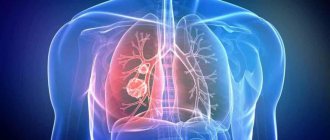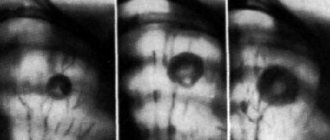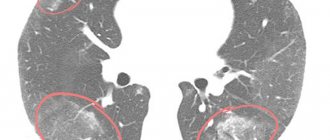The air in many workplaces contains hazardous substances in the form of dust, smoke, mists, gases and vapors. These can be chemical or biological substances, such as animal allergens, fungal spores and bacteria.
Inhaling them can cause damage to workers' lungs and other parts of the respiratory tract. In some cases, dangerous agents travel through the lungs to other parts of the body, causing harm to other organs.
The respiratory system is divided into three sections:
- The upper respiratory tract, which includes the mouth, nose, sinuses, pharynx and larynx.
- The middle respiratory tract includes the trachea and bronchi.
- The lower respiratory tract includes the bronchioles and alveoli.
Many people have a genetic tendency to allergic diseases. After exposure to chemical or biological agents, they are more likely to develop diseases such as rhinitis and asthma. Many of the diseases described in this section of the site can occur without professional contact.
Respiratory irritation.
Respiratory irritation can be caused by many types of dust, gases, vapors and fumes. These gases can also irritate the eyes. The degree of damage to the respiratory tract is determined by their solubility. Highly soluble gases such as ammonia have an immediate effect on the upper respiratory tract (and eyes).
Typically, if someone is exposed to an irritant, they will move away from the source, limiting much damage. Very strong exposure or chronic exposure to a hazardous substance can cause severe damage to the airways, leading to inflammation and swelling of the bronchioles and alveoli (pulmonary edema), which can be fatal if left untreated.
Other soluble gases include chlorine and sulfur dioxide. Relatively insoluble gases such as phosgene may not have an immediate effect but may cause pulmonary edema several hours after exposure. Nitric acid, fluorine and ozone can also cause a delayed reaction.
Some irritants can also cause permanent lung damage, especially if exposure is very high or occurs frequently. Others may predispose people to conditions such as chronic obstructive pulmonary disease (COPD) or pneumonia.
COPD - what kind of disease is it?
Chronic obstructive pulmonary diseases are a group of pathologies; they share some common features. The word “obstructive” means that there is obstruction of the bronchi, that is, a narrowing of their lumen, which prevents air from entering the lung tissue.
COPD has two components:
- Chronical bronchitis. The mucous membrane of the bronchi becomes inflamed, swells and secretes a lot of mucus.
- Emphysema (literally “swelling”) of the lung. During exhalation, the small bronchi collapse, making it difficult for air to escape; as a result, the pulmonary alveoli and the final sections of the bronchial tree (distal bronchioles) expand and their wall is damaged.
These changes are irreversible and no medicine can help eliminate them. But if you change your lifestyle in time and start treatment, you can prevent further damage to the lung tissue, improve your health and reduce the risk of complications.
Asthma
Asthma is the most common occupational respiratory disease. This is a chronic disease characterized by periodic inflammation of the bronchi and contraction of the surrounding muscles. It occurs in response to one or more triggers. Typical symptoms are wheezing, cough, chest tightness and shortness of breath.
Occupational asthma caused by work can be divided into two categories: occupational asthma and asthma aggravated by work. Occupational asthma can be caused by a wide range of agents known as asthmagens. These include chemicals such as isocyanates and acid anhydrides, as well as biological materials such as flour dust and some proteins, and laboratory animal allergens such as the skin, urine, fur or saliva of rats and mice.
As a rule, the condition of workers suffering from occupational asthma worsens during the work week and improves on weekends or while away from work.
Work-aggravated asthma is pre-existing asthma that is aggravated by something in the workplace. It is sometimes called work-related asthma.
Hazardous airway irritants can trigger asthma attacks in people with occupational asthma and in people with work-related asthma.
Benign lung tumor: symptoms
Most often, the pathology is asymptomatic and can be discovered by chance. Clinical manifestations occur when the tumor becomes significant and begins to disrupt the functioning of the respiratory system.
Large tumors of peripheral localization can reach the chest or diaphragm, causing local pain, pain that can be mistaken for cardiac dysfunction, and shortness of breath. The neoplasm can compress large bronchi, limiting their patency, and also provoke a violation of the integrity of blood vessels. The result is hemoptysis and pulmonary hemorrhage.
Tumors of central localization have three degrees of clinical severity:
- Partial bronchial stenosis. At this stage, the narrowing of the bronchial lumen is insignificant. The patient may experience periodic coughing (rarely with hemoptysis). General condition is normal. At stage I, the neoplasm cannot be detected using radiography. Bronchoscopy, bronchography, and computed tomography will be informative.
- Valvular bronchial stenosis. At this stage, the tumor compresses most of the bronchial lumen, provoking valvular or valve stenosis. Valve stenosis is characterized by partial opening of the lumen of the bronchus on inspiration and closure on exhalation. In the area of the lung where stenosis occurred, expiratory emphysema begins to develop. As a result of insufficient ventilation, phlegm and blood accumulate, which provokes an inflammatory process. The patient's body temperature rises, cough with sputum or blood, chest pain, and general weakness.
- Bronchial occlusion. The tumor completely blocks the lumen of the bronchus. In this area, suppuration and tissue necrosis begin to develop. The severity of the lesion will depend on the volume of the tumor and the size of the affected area. The patient has a high temperature, cough with purulent discharge and blood, attacks of suffocation, and poor health.
Chondroma, lipoma, pulmonary fibroma: differential diagnosis
To identify a tumor and determine its nature, instrumental research methods are prescribed. They will allow you to find out the type of tumor and differentiate it from other tumors, including malignant ones. Among the most informative diagnostic methods are:
- Radiography;
- CT scan;
- Bronchoscopy with further cytological examination of the tumor sample;
- Transthoracic aspiration or puncture biopsy of the lung;
- Thoracoscopy with biopsy.
Pneumoconiosis
Pneumoconiosis covers a group of lung diseases that are caused by inhaling insoluble dust, mostly mineral, that the lungs cannot eliminate. The most common diseases in this group are silicosis, coal miners' pneumoconiosis and asbestosis.
Silicosis occurs when inhaling crystalline silica (quartz) dust. It is commonly found in people who work in quarries, mines and sandblasting, as well as those who work in the pottery industry and steel mills. It is a progressive disease—it gets worse even after exposure stops—and is characterized by increasing difficulty breathing, sometimes leading to death.
Pneumoconiosis in coal miners is caused by inhalation of coal dust. It is characterized by a mild cough and the production of black sputum. In some people it leads to progressive massive fibrosis, disability and death.
Asbestosis is characterized by scarring or fibrosis of the lungs after long-term exposure to asbestos. Symptoms include shortness of breath, dry cough and deformities of fingers and nails. It usually progresses, invariably leading to death. It is also associated with mesothelioma and bronchial cancer.
Chondroma, lipoma, pulmonary fibroma: main differences
Benign lung tumors occur with equal frequency in women and men. They are most often detected at a young age. They differ in structure and location. Benign neoplasms are formed from highly differentiated cells that have a similar structure to healthy cells. The main differences between benign and malignant tumors are:
- Relatively slow growth;
- They do not destroy neighboring tissues;
- No metastasis.
Depending on the location of the tumor, there are central and peripheral. The central ones usually grow from large bronchi, and the peripheral ones - from the walls of small bronchi and neighboring tissues. Peripheral tumors are statistically more common than central ones.
Another distinctive characteristic of neoplasms is their structure. Depending on the type of cells from which they are formed, they are distinguished:
- Fibroids;
- Chondromas;
- Lipomas.
Fibroids are made up of connective tissue cells. It affects the right and left lungs with equal frequency. On average, its size is 2-3 cm in diameter, but in advanced cases it can reach gigantic proportions. Lung fibroma has the appearance of a dense node with a well-formed capsule with a smooth surface.
Chondroma consists of elements of embryonic tissue (cartilage, fat, glands, smooth muscle fibers, lymphoid tissue). Most often, peripheral localization is observed with growth in the thickness of the lung tissue. Chondroma is characterized by slow growth and may not manifest itself for years. The tumor does not have a capsule; it has a round shape and a smooth surface. The chondroma is clearly separated from the surrounding tissues.
Lipoma is a neoplasm of fat cells that are separated by connective tissue septa. This type of tumor is quite rare in the lungs. Mainly has a central localization. Tumor growth is slow. The lipoma has a clearly defined capsule of elastic consistency and is round in shape.
Allergic alveolitis
Allergic alveolitis is caused by inhalation of certain organic materials, usually fungal spores. Alveolitis is inflammation of the alveoli by an allergen. Symptoms usually begin within a few hours of exposure, with flu-like symptoms: fever, fatigue and shaking.
As the disease progresses, the patient experiences shortness of breath and develops a cough. Long-term exposure can lead to chronic symptoms and pulmonary fibrosis. Farmer's lung is a type of allergic alveolitis caused by inhaling dust or spores from moldy hay, grain, or straw.
Cancer
Cancer can occur anywhere in the respiratory tract, from the nose to the lungs. Although the biggest cause of lung cancer and other respiratory diseases is smoking, hazardous substances found in some workplaces can also cause cancer, such as crystalline silica, diesel exhaust particles and radon gas.
Exposure to asbestos can lead to lung cancer or mesothelioma, a cancer of the epithelium of the lungs or intestines. Relatively small or short-term exposure to asbestos can lead to both types of cancer. People typically exposed to asbestos, and therefore at increased risk, are plumbers, carpenters and other workers involved in the construction and maintenance of buildings. There is usually a long delay between first exposure and the onset of symptoms (up to 50 years). If workers are exposed to asbestos and also smoke, they have a much greater risk of developing lung cancer than those who are exposed only to asbestos or only smoke.
People exposed to polycyclic aromatic hydrocarbons, such as workers in the coke industry, face a higher risk of developing lung cancer. Other lung carcinogens include arsenic, cadmium, chromium and nickel.
People who work with wood or leather and are exposed to dust are at increased risk of sinus cancer.
What symptoms should prompt you to see a doctor?
One of the main manifestations of COPD is cough. It bothers me the most in the morning. A typical picture looks like this: a smoker wakes up in the morning and cannot clear his throat. He lights a cigarette, after which he “clears his throat”, he feels better, and a small amount of sputum comes out.
Shortness of breath initially occurs only during physical activity. As changes in the lungs increase, it begins to bother you constantly. Discomfort and pain in the chest occur periodically. Impaired lung function leads to symptoms such as bluish skin, barrel-shaped deformation of the chest, constant drowsiness, increased fatigue, and headaches. Changes in the lungs and their blood vessels lead to heart problems.
We will call you back, leave your phone number
Message sent!
expect a call, we will contact you shortly
Suffocation
Choking is a hazard for people working in confined spaces, such as welders. When oxygen is displaced by gas or steam, it can be difficult or even impossible for people to breathe. Choking can be divided into simple and chemical.
Simple asphyxiants are inert gases or vapors such as nitrogen, carbon dioxide, hydrogen and methane, which at high concentrations displace oxygen from the air. Chemical asphyxiants include carbon monoxide, which, in combination with hemoglobin, prevents the delivery of oxygen to cells, as well as hydrocyanic acid and hydrogen sulfide, which impair respiration at the cellular level.








